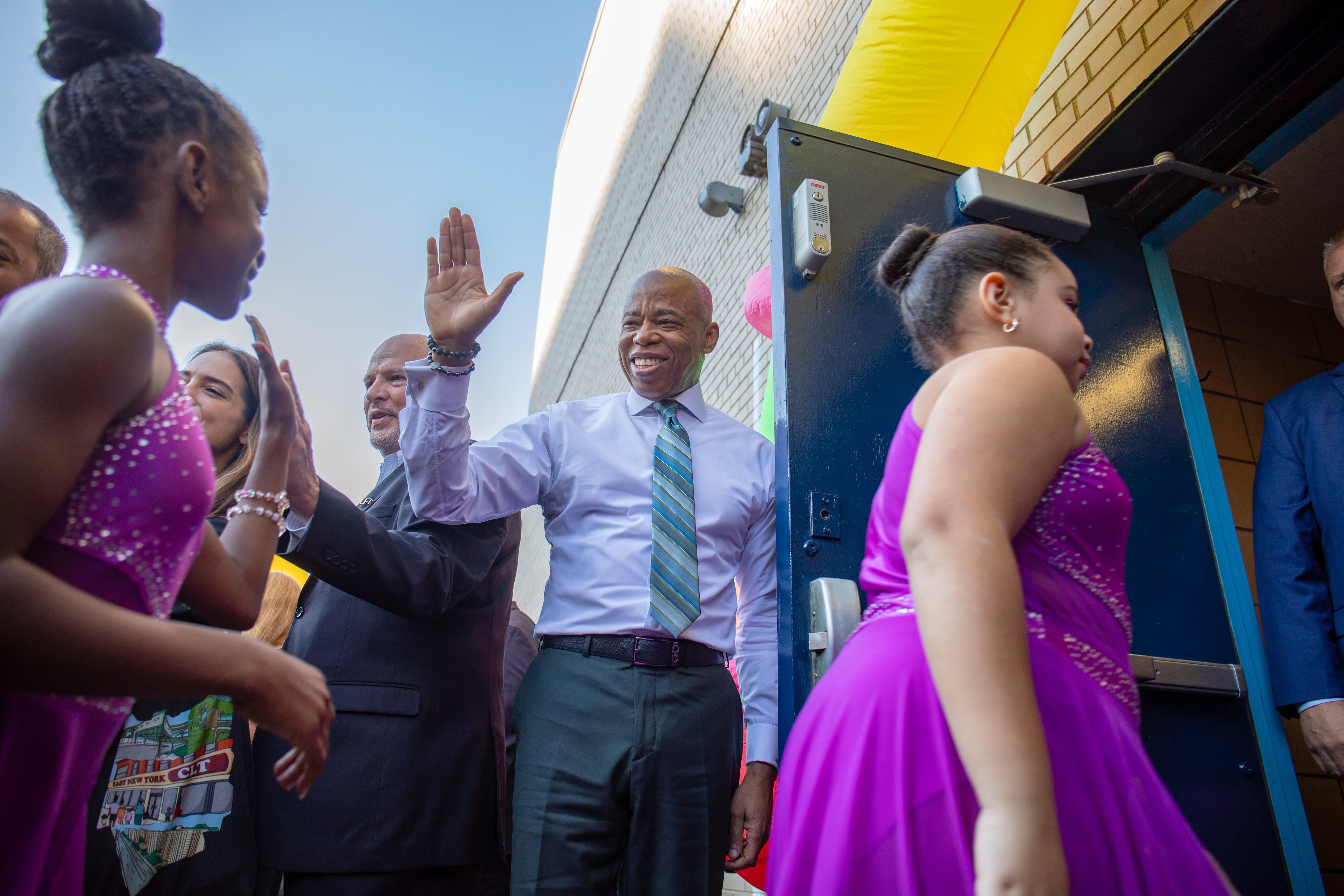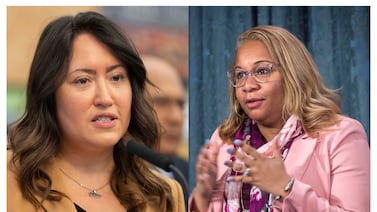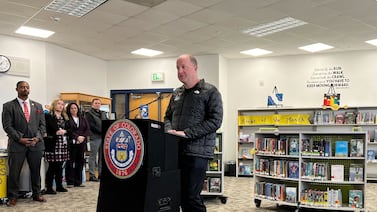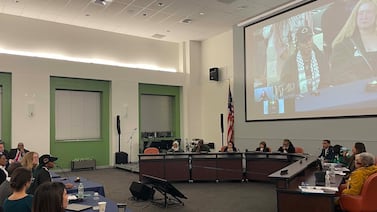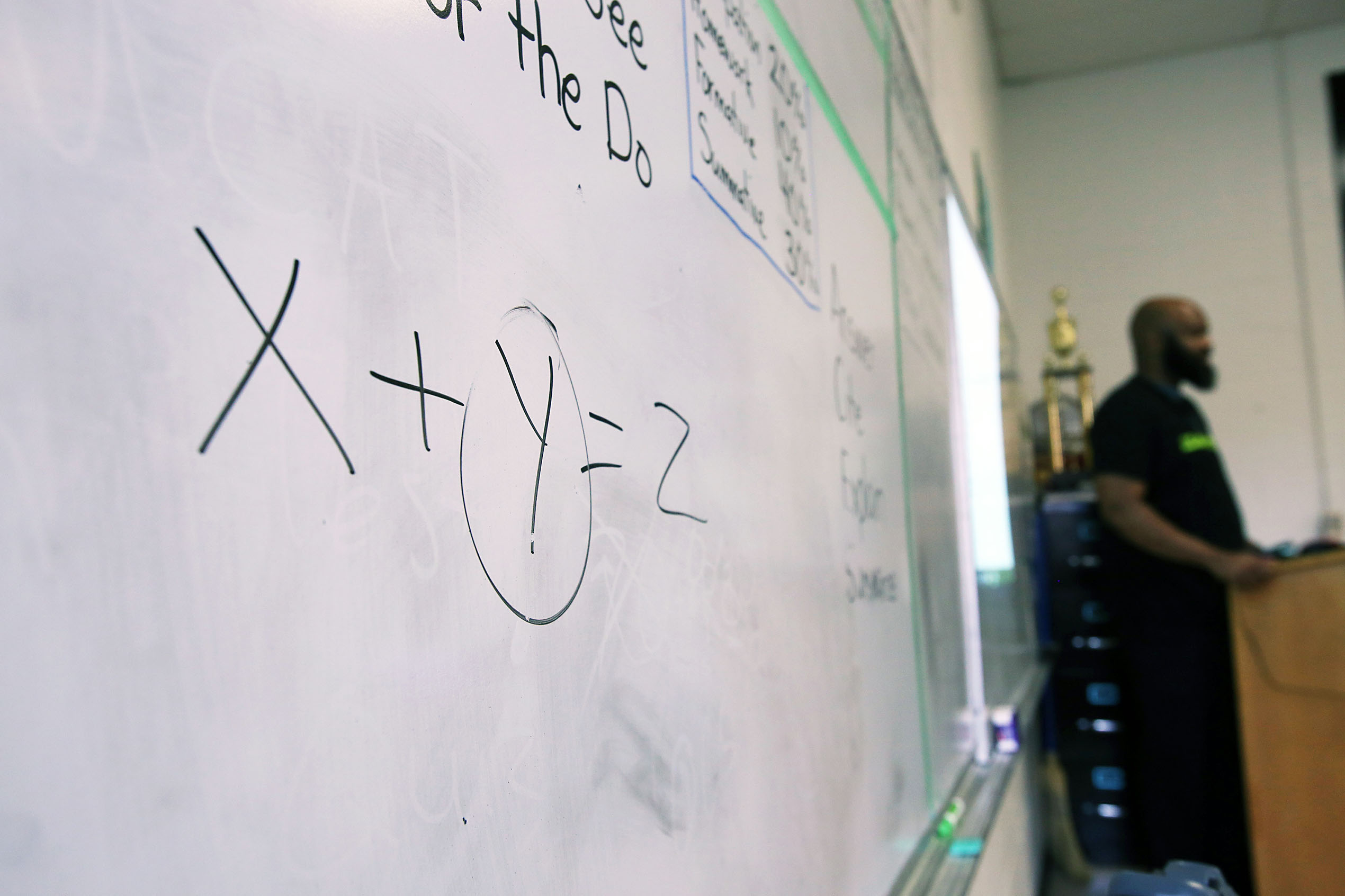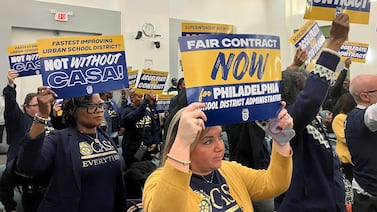Sign up for Chalkbeat New York’s free daily newsletter to get essential news about NYC’s public schools delivered to your inbox.
In the weeks before Mayor Eric Adams took office in 2021, he said New York City’s schools needed swift changes, pointing to low reading and math scores among Black and Latino children.
“If 65% of white children were not reaching proficiency in the city, they would burn the city down,” Adams said at the time.
Now, as Adams ends his reelection campaign, he will no longer oversee the nation’s largest school system as of January.
The mayor’s focus often strayed from education, especially in the midst of corruption scandals that rocked City Hall and ultimately led to the resignation of his schools chief and longtime friend, David Banks. But Adams did make good on his early promise to address low reading and math proficiency rates, ordering one of the largest curriculum overhauls in recent years.
Here are four things to know about Adams’ education legacy.
The big focus: curriculum shakeups
The most significant stamp Adams put on the Education Department: dramatic overhauls in how schools are expected to teach reading and math.
Curriculum decisions were previously left to principals, creating a patchwork of approaches from campus to campus. In the wake of a nationwide “science of reading” movement to rethink literacy instruction — and with the backing of the teachers union — the Adams administration required all elementary schools to use one of three city-approved reading programs.
Some educators said the rollout was bumpy, training was scattershot, and the most widely used reading curriculum had significant flaws. The mandated high school algebra program has also earned mixed reviews.
Literacy experts have largely cheered the reading curriculum changes.
“It was a bold move administratively to say that the decision making power of curriculum was going to be at City Hall,” said Katie Pace Miles, a reading expert at Brooklyn College who is working to improve literacy in the city’s public schools.
City officials contend their efforts are paying off, pointing to state test score jumps last year in reading and math.
“We put the train on the right track,” said Banks, Adams’ first schools chancellor who oversaw the curriculum changes. “And the recent scores show that.”
Still, the increases mirror those across the state, where there were not similar curriculum mandates. Assessment experts caution that it is too early to draw definitive conclusions.
It will be up to the next mayor to determine whether to keep investing in those changes, which Adams is in the process of expanding to middle schools.
Budget cuts dominated the headlines, but the reality was more complex
The mayor sparked headline after headline about threats to slash the Education Department’s budget, from school food to popular free preschool programs. He even spawned T-shirts that declared: “Eric Adams Defunded My School.”
As one-time federal COVID relief money for school dried up, Adams indicated spending reductions were necessary. He later continued to propose education cuts as costs mounted to serve the influx of migrants.
After facing significant pushback, Adams wound up reversing many of the reductions, including a chunk of the early childhood education cuts. He ultimately funneled hundreds of millions in city and state dollars to avoid cutting programs that relied on federal relief money, including hundreds of social workers, staff at homeless shelters, and a popular summer enrichment program that launched during the pandemic.
His administration also tweaked the city’s funding formula to send more money to schools that serve greater shares of students with disabilities, English learners, or those living in poverty. Overall, the Education Department’s budget grew under Adams.
The early wave of budget threats from Adams “shape the narrative,” said Banks, the former chancellor. “The mayor kept looking like the bad guy.”
Focus on expanding selective programs
As public school enrollment fell sharply in the wake of the pandemic, the Adams administration sought to lure families back to the system.
They added seats to gifted and talented programs, which have long been seen as a way to keep more affluent families in the city’s schools. On top of that, the Education Department opened 28 new schools in recent years, including some high schools that screen students based on their academic records. Officials hoped the new schools would offer strong programs in communities that have historically lacked access to them. The moves have been popular with some families.
Still, others argue that creating new screened programs will exacerbate segregation and could leave campuses that don’t use selective admissions with an even greater share of students who are behind.
“I think that students learn best when they can be in communities of diverse learners,” said David Adams, the CEO of Urban Assembly, which supports 22 schools that do not use selective admissions. “The lack of emphasis on enrollment practices that drive segregation in our city was a misstep.”
Doubling down on career education
City officials have expanded the number of high schools that offer students exposure to career opportunities before graduation, a growing trend as many school districts are pivoting away from college as the goal for all students. The Education Department also has struggled to scale up certain elements of the programs as quickly as anticipated.
About 180 schools are now part of FutureReadyNYC, an Adams administration program that introduces students to careers in fields including health care, technology, business, and education. Students can also work toward early college credit and industry certifications while in high school or participate in internships.
Adams, of Urban Assembly, said he believed the expansion of career programming was a “great accomplishment.” And despite his desire for the administration to focus more on inequities in the admissions process, he said the curriculum overhauls and career education programs have left the school system in a better position.
“Imagine what that means for young people who can better read text, who can better solve algebraic equations, who are on the pathway to economic and social mobility to a larger extent than they were before,” he said. “That, to me, is a win.”
Alex Zimmerman is a reporter for Chalkbeat New York, covering NYC public schools. Contact Alex at azimmerman@chalkbeat.org.

